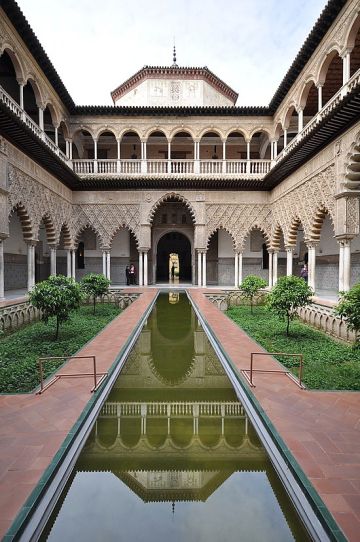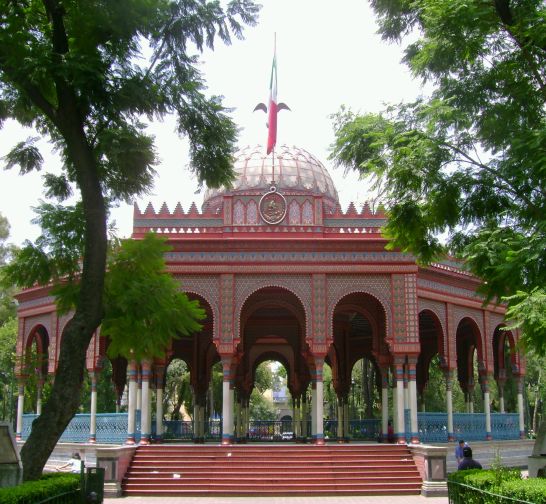The Spanish Renaissance
In the 16th century, Spain was also influenced by the Italian Renaissance. In fact, many Spanish artists went to there to learn about the aesthetics and scientific advancements taking place. But, because the Church was the most prominent patron of the arts, Spanish Renaissance art is dominated by religious subject matter. Neverthess, the 17th century is regarded as the Golden Age of Spanish culture with writers such as Cervantes, Quevedo, and Góngora. The cities of Seville, Madrid and Valladolid were art centers where one would find famous painters such as El Greco, Ribera and Velázquez. Monarchs commissioned portraits or historical paintings, and despite the dominance of the Church, new sources of inspiration also came from everyday life.
|
INSPIRATION & STYLE
It is important to remember that Spain was occupied by the Moors beginning in the 8th century. So Islamic influence remained part of the Spanish culture, especially the use of geometric designs and beautiful tile work. But the Spanish reconquered their land one city at a time. By 1481, Granada was the last place controlled by the Moors and they were defeated in 1492. After this, they were expelled from Spain unless they converted to Christianity. Meanwhile, a style emerged in Spain that blended Muslim and Christian influence called Mudéjar or Morisco - meaning "Moorish."
Both Moorish and Italian Renaissance elements could be seen in the same design, such as the tower of the Church of Utebo (pictured at left) in the church called Our Lady of the Assumption in Aragon, Spain. Covered with tilework and shaped in a complex geometric design, it has Moorish traits applied to a Catholic church.
Originally a Moorish fort, the Alcazar of Seville became a royal palace that was expanded during the Renaissance. It is an excellent example of Mudéjar design, as can be seen in the Courtyard of the Maidens, (pictured right). Note the scalloped arches, which are typical of Moorish style. The inner courtyard with its carefully planted garden and reflecting pool also show Moorish the influence.
|
|

|

www.travelpod.com/s/photos/hotel+alcazar+seville
|
|
In the 19th century, there was a revival of Mudéjar style, as seen in the gazebo of Santa Maria La Ribera, shown at right. It was Mexico's contribution to the 1884 World's Fair, held in New Orleans. After the fair, the cast-iron structure was disassembled, brought back to Mexico City in pieces, and rebuilt in the Alameda Central.
It is important to remember that Spain was occupied by the Moors beginning in the 8th century. So Islamicd influence remained part of the Spanish culture, especially the use of geometric designs and beautiful tile work. But the Spanish reconquered their land one city at a time. By 1481, Granada was the last place controlled by the Moors and they were defeated in 1492. After this, they were expelled from Spain unless they converted to Christianity. Meanwhile, a style emerged in Spain that blended Muslim and Christian influence called Mudéjar or Morisco - meaning "Moorish."
|
|

(http://www.panoramio.com/photo/3726446)
|
return to top | previous page | next page